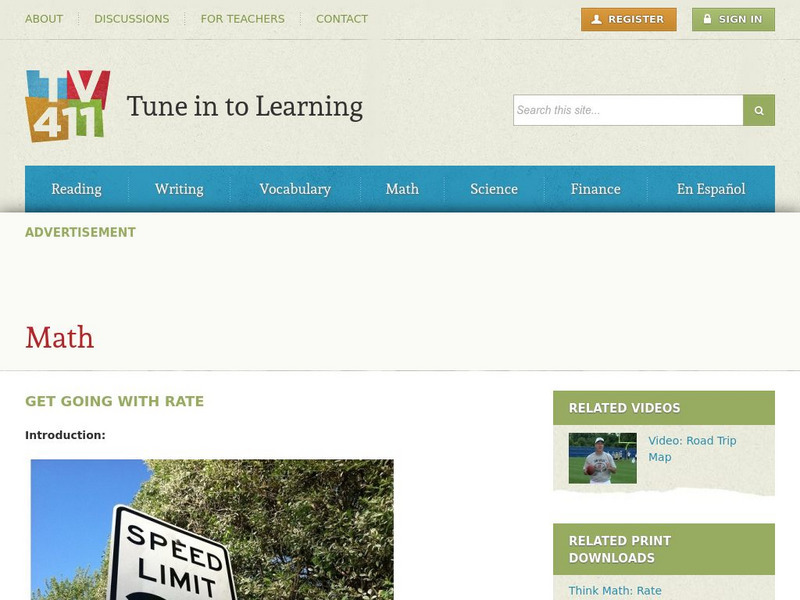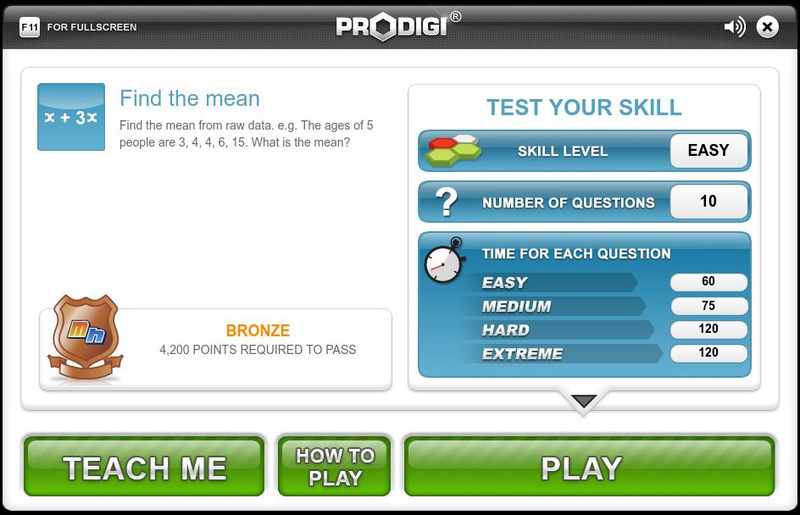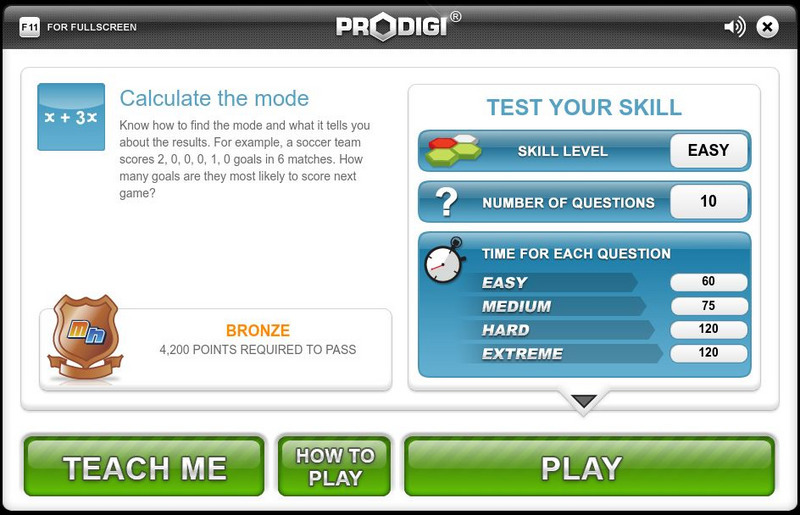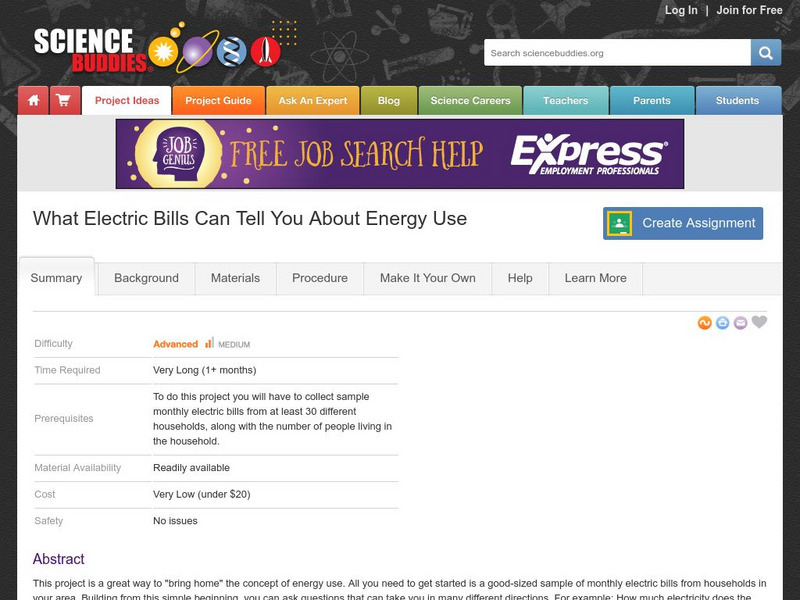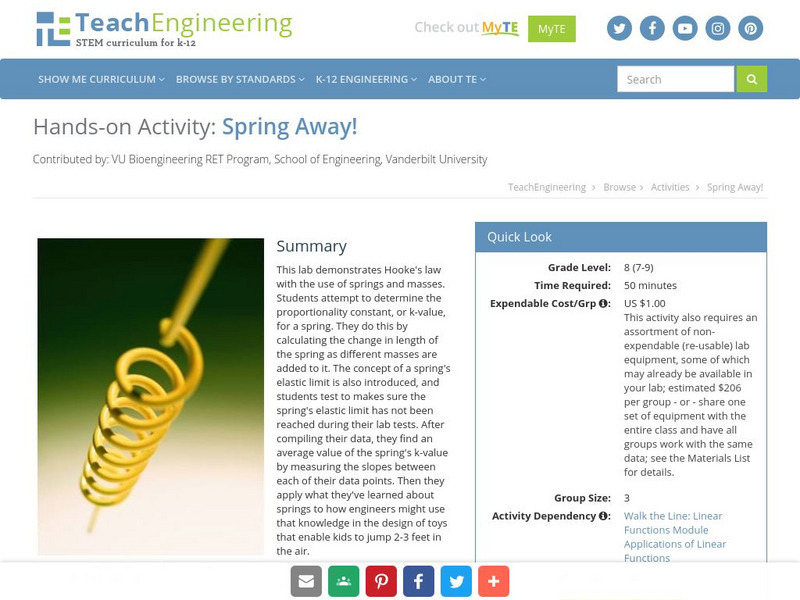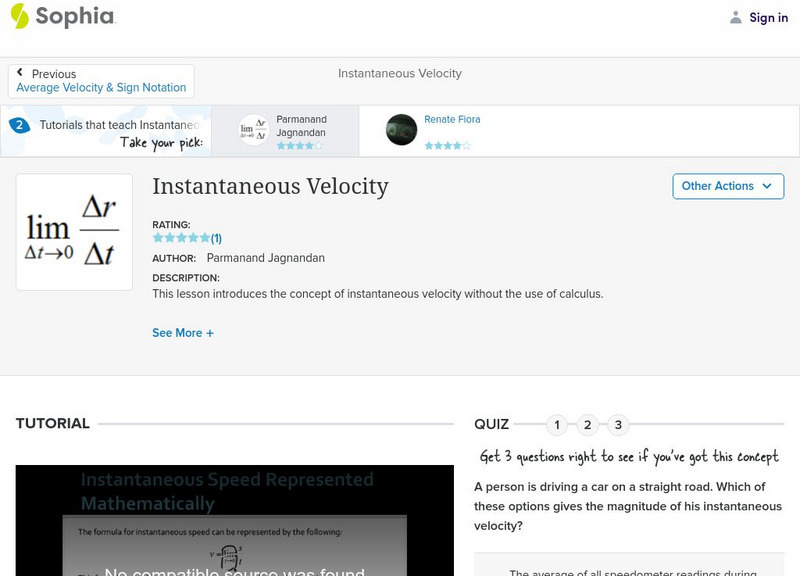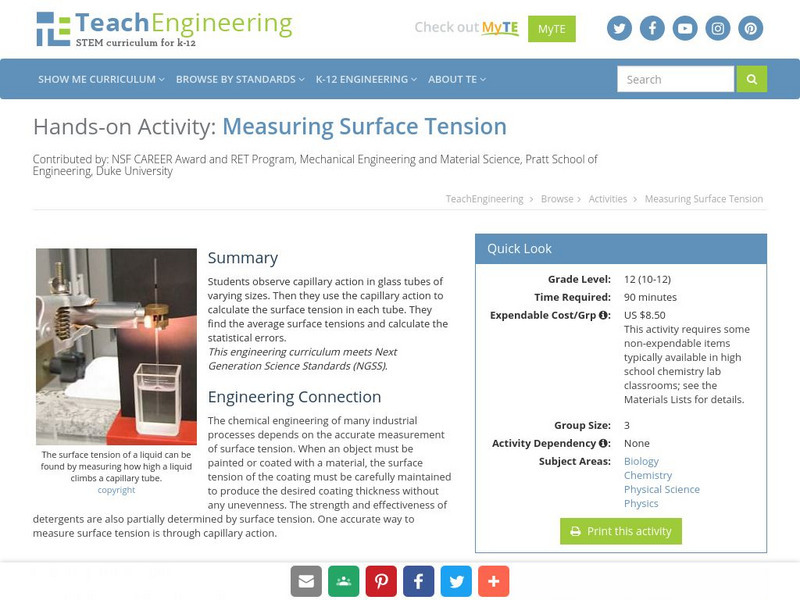Hi, what do you want to do?
Education Development Center
Tune in to Learning: Get Going With Rate
Explore the concepts of rate, distance, and speed in this interactive lesson. Discover how to use formulas to solve word problems and calculate salaries. A concise lesson with excellent examples, connections to real world experiences,...
PBS
Pbs Teachers: Earth Day: What We Do Adds Up
Explore averages and rates of change and apply to calculate the cumulative effect of garbage thrown out by people over time. Use population data from the U.S. Bureau of Census to estimate how much garbage your county threw away during...
Mangahigh
Mangahigh: Data: Find the Mean
Students learn about the concept of mean by exploring a tutorial. They can then test their knowledge by taking a ten question assessment that increases in difficulty as they correctly answer questions.
Chem Tutor
Chem Tutor: Atomic Structure: Atomic Weights and Atomic Numbers
This lesson explains many basic concepts of atomic structure. It starts with atomic mass and number and then works up to more sophisticated information on electron configuration and how each element fits into the Periodic Table.
Mangahigh
Mangahigh: Data: Calculate the Mode
Students learn about the concept of mode by exploring a tutorial. They can then test their knowledge by taking a ten question assessment that increases in difficulty as they correctly answer questions.
Mangahigh
Mangahigh: Data: Calculate the Median
Students learn about the concept of median by exploring a tutorial. They can then test their knowledge by taking a ten question assessment that increases in difficulty as they correctly answer questions.
PBS
Pbs Teachers: Sports and Math: Batting Averages and More
Set up a spreadsheet using a computer or graphing calculator, and perform calculations using columns. Calculate percentages and solve a system of equations regarding baseball statistics.
Sophia Learning
Sophia: Introduction to Probability
Introduction to Probability is a resource that provides assessment and teacher tutorials that focus on mathematic concepts such as probability, outcomes, events, probability distribution, laws, values and odd.
Houghton Mifflin Harcourt
Houghton Mifflin Harcourt: Saxon Activity Center: Graphing Calculator Activity: Average [Pdf]
A concise graphing calculator lesson on calculating average. Detailed examples, demonstrations of calculator functions, and practice problems included. Acrobat Reader required.
Science Buddies
Science Buddies: What Electric Bills Can Tell You About Energy Use
This project is a great way to "bring home" the concept of energy use. All you need to get started is a good-sized sample of monthly electric bills from households in your area. Building from this simple beginning, you can ask questions...
TeachEngineering
Teach Engineering: Spring Away!
This lab demonstrates Hooke's Law with the use of springs and masses. Students attempt to determine the proportionality constant, or k-value, for a spring. They do this by calculating the change in length of the spring as different...
That Quiz
That Quiz: Medias
This interactive activity is designed as a review to the concept of mean, median and mode.
Sophia Learning
Sophia: Instantaneous Velocity: Lesson 1
This lesson introduces the concept of instantaneous velocity without the use of calculus. It is 1 of 2 in the series titled "Instantaneous Velocity."
TeachEngineering
Teach Engineering: Measuring Surface Tension
Students observe capillary action in glass tubes of varying sizes. Then they use the capillary action to calculate the surface tension in each tube. They find the average surface tensions and calculate the statistical errors.
TeachEngineering
Teach Engineering: Curb the Epidemic!
Using a website simulation tool, students build on their understanding of random processes on networks to interact with the graph of a social network of individuals and simulate the spread of a disease. They decide which two individuals...
Tutor2u
Tutor2u: Long Run Costs
A comprehensive, yet sophisticated explanation of long run costs of production. Includes charts and graphs to illustrate key points and concepts. Somewhat advanced in places.
Donald Clark
Blended Learning
While the concept of blended learning has probably been around since the beginning of Instructional Design, the term was not coined until the late nineties. However, blended learning is probably the closest thing we have to a silver...
Shodor Education Foundation
Shodor Interactivate: Stock Exchange Game
In this game, two players compete in a stock exchange, working with the concepts of theorertical and experimental probabilities and expected value. They must enter the probability and payoff of winning a single game, then observe the...
National Council of Teachers of Mathematics
Nctm: Figure This: How Much Time Do Teens Spend on the Job?
Try this math challenge where you investigate the average number of hours teen actually spend working. Apply your problem solving, number sense, and computation skills in this one page activity from the NCTM Math Challenges for Families...
National Council of Teachers of Mathematics
Nctm: Figure This: Gasoline Tanks
Inquiring minds want to know, how far can you go on a tank of gas? See if you can figure out this math challenge that explores rate, distance, and time. A one page activity from the NCTM Math Challenges for Families series. Application...
Math Graphs
Houghton Mifflin: Math Graphs: Mean Value Theorem 3 [Pdf]
The handout investigates the calculus concept that given a section of a smooth curve, there is at least one point on that section where the slope of the curve is the same as the average derivative. The exercise consists of a graph that...
Math Graphs
Houghton Mifflin: Math Graphs: Mean Value Theorem 4 [Pdf]
The handout investigates the calculus concept that given a section of a smooth curve, there is at least one point on that section where the slope of the curve is the same as the average derivative. The exercise consists of a graph that...





